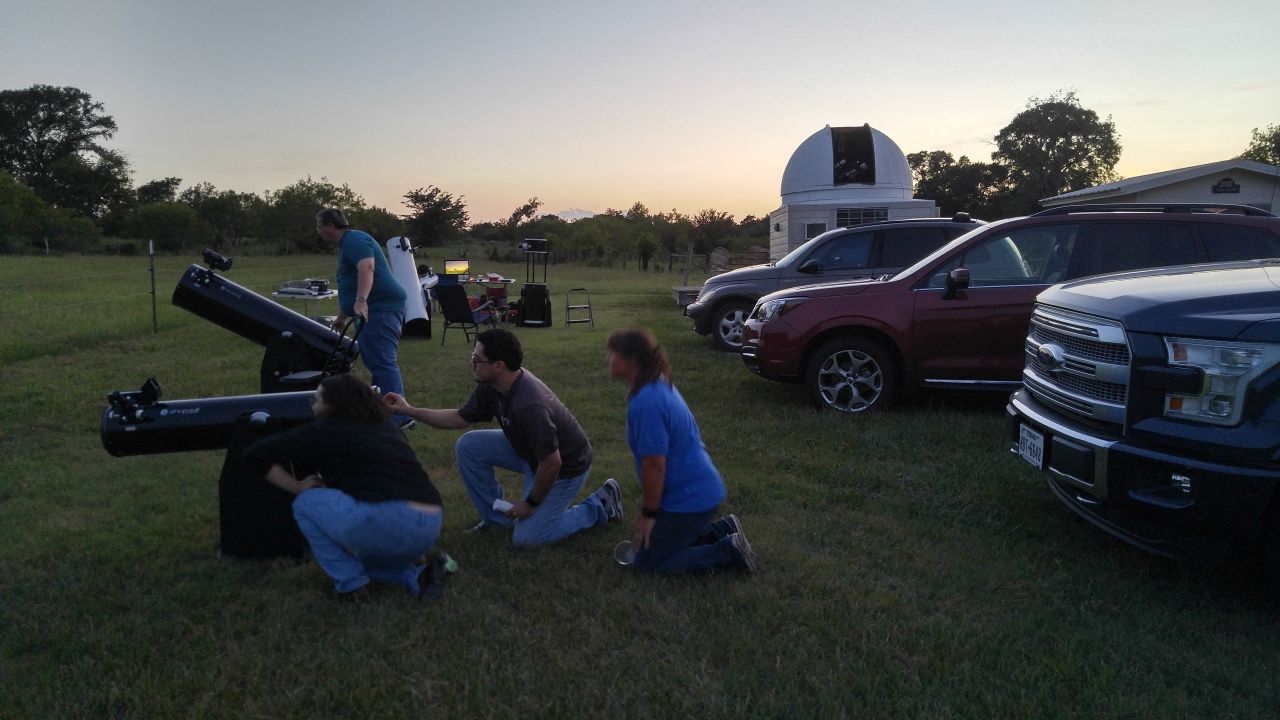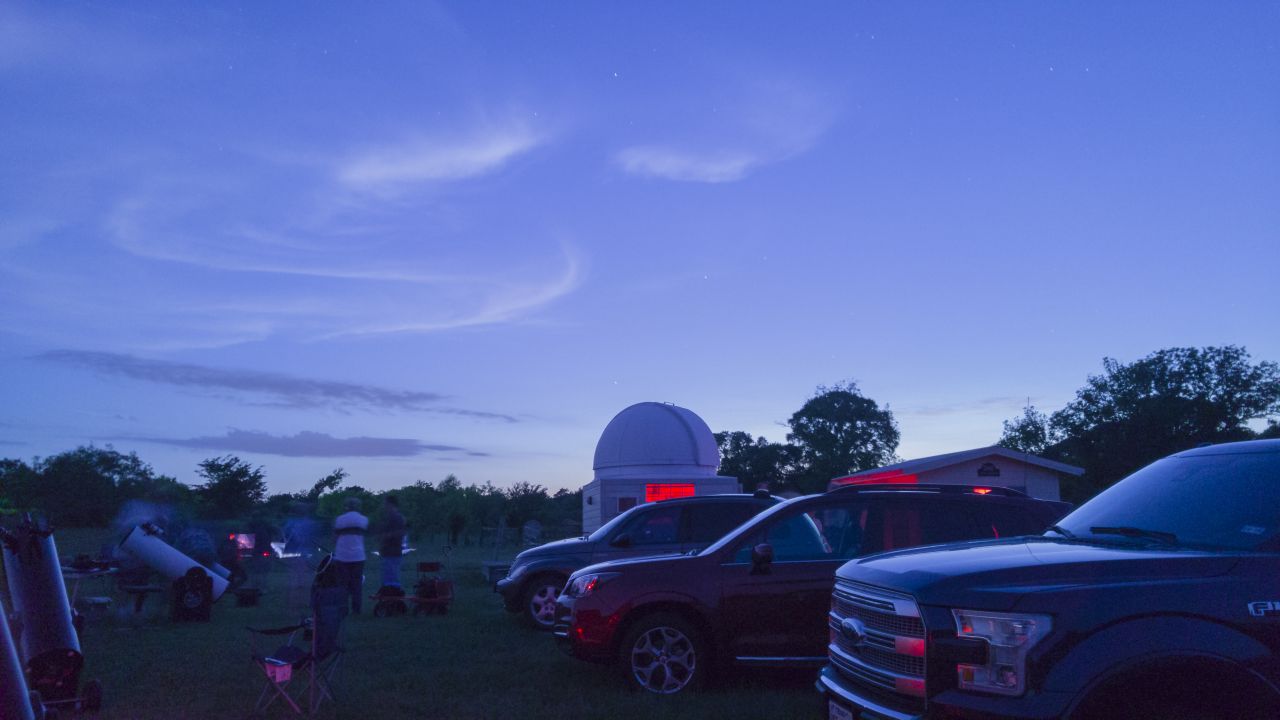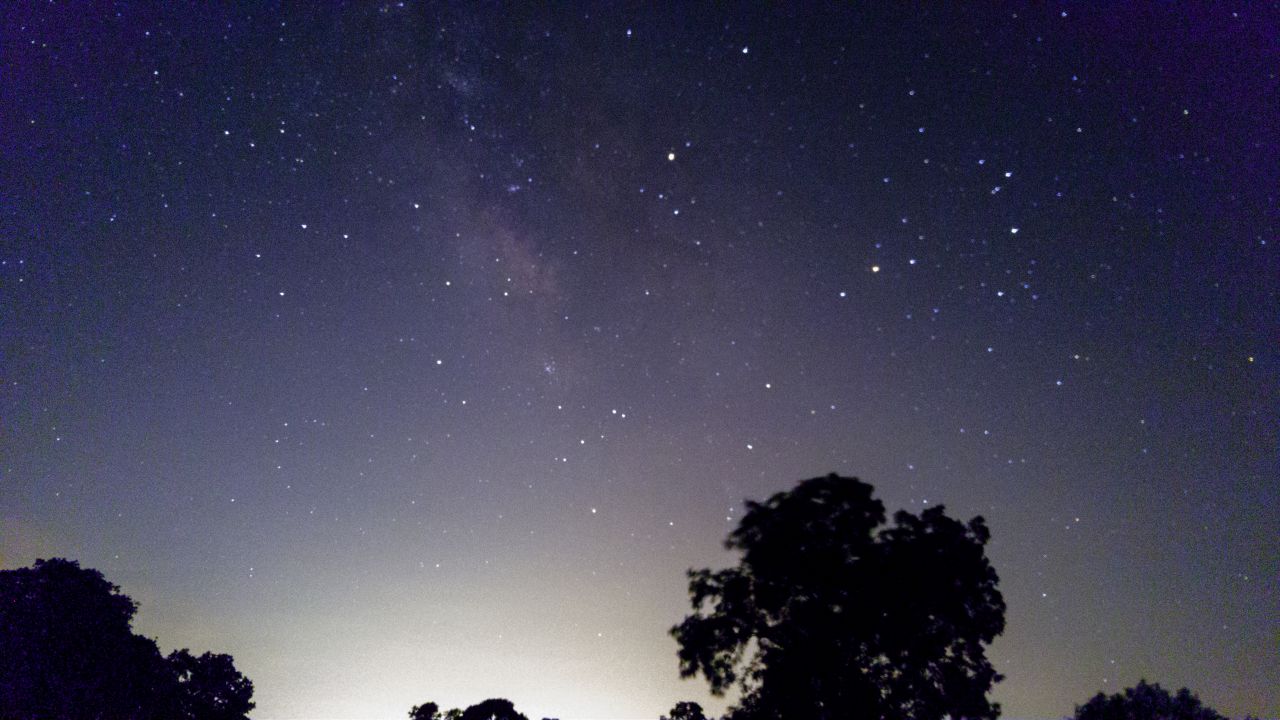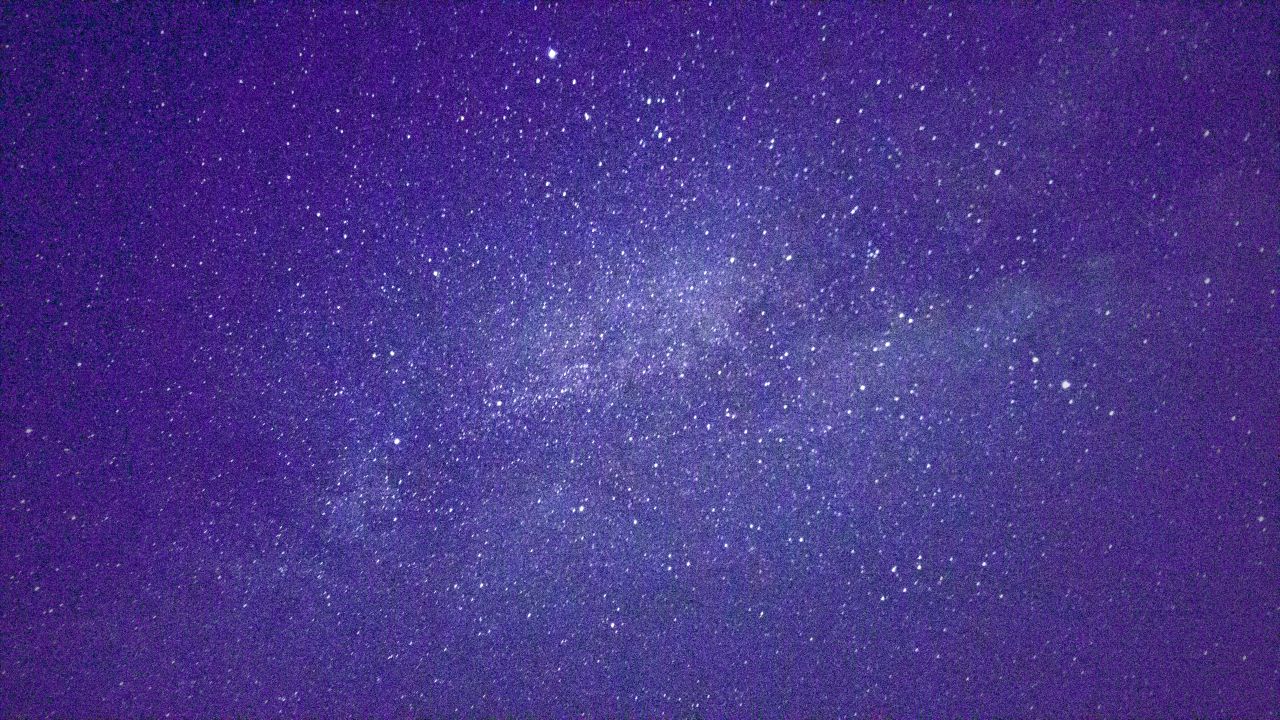
| Observer: | Tom Campbell |
| Location: | College Station, Texas (Long: 96°17'W Lat: 30°37'N) |
| Telescope: | Zhumell 12" f/5 Dobsonian |
| Eyepieces: | Explore Scientific 18mm (83x) Explore Scientific 11mm (136x) |
| Lenses: | Celestron Luminos Barlow (2.5x) |
Last night, the Brazos Valley Astronomy Club (BVAC) held its annual member star party. It is hosted by Mark, one of the club members who lives in the country and has a personal observatory equipped with an 11 inch SCT (I believe... I didn't ask, but it looked about that size) and a 5 inch Takahashi refractor.
I planned to arrive by about 8pm, but ended up getting there at 8:15 because I was going from memory and took a wrong turn (not too unusual for me). When I arrived, several others were already there and were enjoying pizza and soft drinks. I grabbed a couple of slices for myself and then proceeded to set up my telescope.
Getting the telescope out of my car was a lot more of a chore than usual. The night before, I was working in the garden with my wife to plant a flower and I twisted my leg wrong and re-injured myself in the same spot where I had broken my knee in a car accident a few years before. There were moments when the pain was intense, but as long as I rested it for a bit, the pain subsided.
As I grabbed the base of the telescope out of the car, the extra weight put more pressure on my legs and my knee started letting me know it still wasn’t okay. I was a bit worried that it might give out on me when I picked up the heavier Optical Tube Assembly, so I asked for a hand. Tim, the club president, was happy to help.
Looking up, about half the sky was covered in high-level clouds. Luckily, most of those would clear out before it got completely dark.

Our newest club member, Warren, set up his 10-inch dob next to mine. He said it was about 25 years old, but it still looked to be in great shape.
On the other side of me, another new club member, Heather, was setting up her telescope. She had just bought a used Zhumell 8-inch dob, and said she was having trouble seeing much through it. It came with a Telrad on it, and it was pretty well aligned, but just needed a bit of tweaking. I showed her how to adjust the “target” on the Telrad with the adjustment screws.

Jupiter was peeking out by now, so I took aim with my telescope. The temperature was still in the 90s and my cooling fan hadn’t had time yet to dissipate the tube currents, so the view wasn’t the greatest. Still, I could see a few cloud bands and all four of the Galilean moons. Europa was just peeking out from behind the planet.
Heather was trying to find Jupiter with her own telescope. I asked her if she had any luck. She said, “I found it, but I’m not seeing any detail. It’s blurry.” I explained to her how to focus the telescope, but when she tried, the focuser wasn’t working. I fiddled around with it and discovered that the focuser had a locking screw that was preventing it from moving when the knobs were turned. I adjusted it and it began working.
With that problem fixed, Heather was in great shape to get some practice time in on her new telescope. She spent the rest of the evening finding objects on her planisphere and then trying to find them in the sky.
The sky was getting darker now and the Milky Way was becoming faintly visible to the naked eye. I swung my scope around to Saturn. It looked nice, but the atmosphere was still a bit turbulent. I decided to come back to it later when it was a bit higher in the sky.
Throughout the night, I took a few pictures with my smartphone. I brought a tripod because I was hoping to get a good shot of the Milky Way from a fairly dark sky and see how it compares to the ones I could get in my back yard.

In between camera shots, I would move my telescope to some of the brighter Messier objects, and offer others to come and take a look at the views. A few did, but most were busy with their own telescopes. M4, M22 and M13 looked fantastic. I bumped up the magnification to 341x. M13 and M22 filled the view and countless hundreds of pinprick stars were visible.
Bumping the magnification back down a bit, I looked at the Omega Nebula and the Wild Duck Cluster. Both of those also looked great tonight. The sky and my telescope must be settling down a bit.
I pointed at Saturn again. A lot nicer now, but still not as clear as I had seen it a few weeks ago at home. I decided to forego the planets tonight and see if I could make out any faint objects that I couldn’t find in my back yard.
It was then I realized I had forgotten to pack my Star Chart. Usually, I keep it in my eyepiece case, so it will always be with me wherever my telescope travels. But the other day I had taken it out to look up something and forgot to return it to its home. Arrrgh!
Without star charts, I had no hope of finding any of those fainter objects. I certainly wasn’t going to be able to find them from memory. This is the same memory that had almost gotten me lost a couple hours earlier.
Disappointed, I decided to take a few more shots of the sky with my smartphone. I played around with focus, shutter speed, and ISO settings, seeing what helped and what didn’t. It was good practice, and will maybe help me get a few good shots during the eclipse next month.

I also made sure to take a look at Saturn in the Takahashi. It is a real planet-killer. The views were sharp and steady, and I spent more time on the ladder looking through the eyepiece than I probably should have, but the view was hard to pull away from.
I went back and forth between the camera and the telescope, but eventually my knee pain was really starting to kick in. It was nearly midnight anyway, so I decided to pack it in. A few others had already left.
The food was good, the company was great, and the night turned out to be decent, even with a few clouds threatening to crash the party now and then. I went home dreaming about living in a place where my back yard was dark enough to see that many stars.